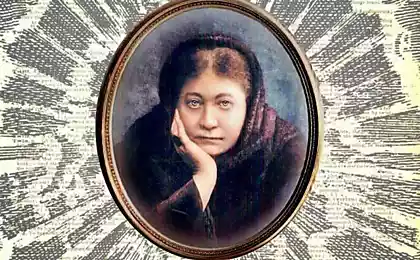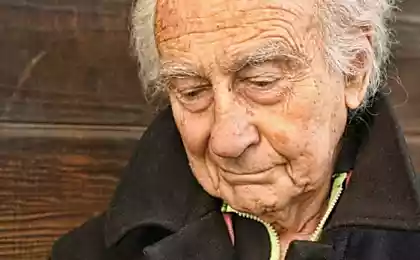330
The Life of Helen Blavatsky
Every era has its own mystery. One of the most mysterious figures of the nineteenth century is Elena Petrovna BlavatskyA brilliant Russian woman who laid the foundations of the Theosophical movement and was the first to make a daring attempt to unite all the world religions.
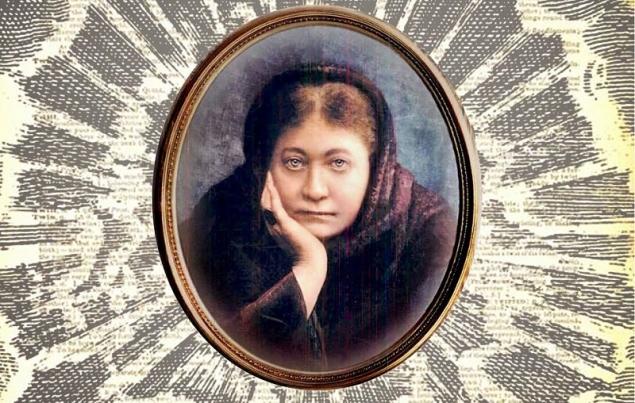
There are people who come into the world with a clear mission. This mission of serving the common good makes their lives a martyrdom and a feat, but thanks to them, the evolution of mankind is accelerated.

That was Blavatsky's mission. More than a hundred years have passed since one day in May she left the earthly world. It is only now that we begin to understand her life.
Elena Blavatskaya Helena Petrovna Gan, later known worldwide as Elena Petrovna Blavatsky, was born on July 31, 1831 in the city of Ekaterinoslav (modern Dnepropetrovsk).
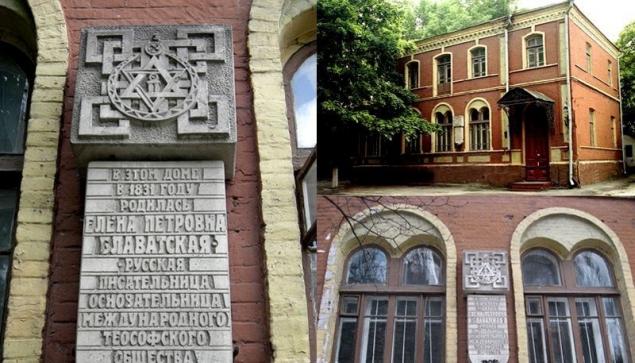
Blavatsky's mother - Elena Andreevna Hahn, a famous writer, in her virginity bore the surname Fadeev and belonged to the noble family of princes Dolgorukov, her father belonged to the family of hereditary Maclenburg princes Han von Rothenstern-Gan.
Elena Petrovna’s mother was called “Russian George Sand” for her literary talent, but she died suddenly at the age of twenty-eight, leaving two daughters in the care of her grandfather, the secret adviser Andrei Mikhailovich Fadeev.
Elena Petrovna was born prematurely and from childhood showed unusual abilities and cool disposition. Everywhere she heard strange voices, dreamed of ghosts, she confused relatives with her stories about the otherworldly.
Her favorite place (as she was called) was the library. At a very young age, Elena Petrovna reread almost all the main esoteric works from her grandfather’s library: Kabbalah, treatises on alchemy and astrology, legends about Atlantis and Greek priests.

According to her, as a child, she was most influenced by cavalry officers, friends and associates of her father, as well as Buddhists, whom she first met at the age of fourteen, visiting the city of Semipalatinsk, located on the border of Siberia and Mongolia.
In addition, from Semipalatinsk Buddhists, young Lölya learned about the distant mystical land of Shambhala, which later played a significant role in her life.
The habit of moving in Elena Blavatsky was formed in the years of childhood. Due to the father’s official movements, the family often had to change their place of residence. In Tiflis in the winter of 1848-1849, Elena Petrovna, wishing to gain complete independence, concluded a fictitious marriage with a man much older than her - Vice-Governor of Yerevan Nikifor Vladimirovich Blavatsky.
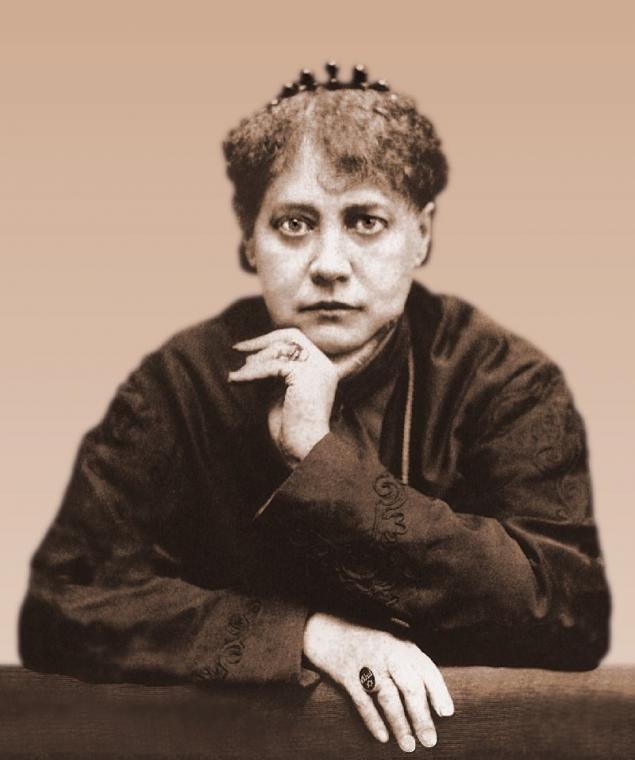
Three months after the wedding, Elena ran away from her husband and returned to her family. Her grandfather sent her with two escorts to her father in Odessa, but Elena managed to escape from them. From Odessa on the English sailboat "Commodore" Blavatsky, dressed as a young man, sails to Kerch, and then to Constantinople, where he meets the Russian Countess Kiselev.
Together they go on a trip to Egypt, Greece and Europe. The free journey of Blavatsky begins, which lasted forty-three years and is full of amazing adventures. Its chronology is difficult to restore accurately, since Elena Petrovna herself did not keep diaries and no one close to her was not.
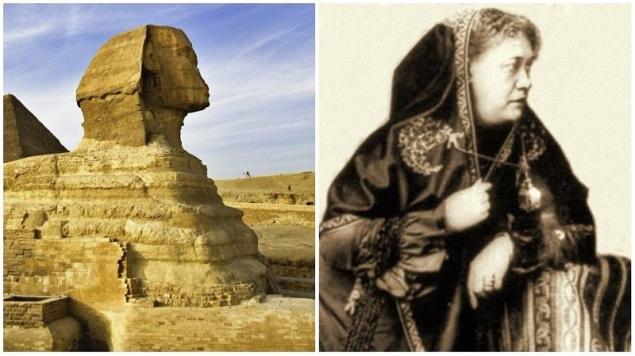
In 1871, on the way to Cairo, on the ship on which Blavatsky sailed, a powder cellar exploded. Having miraculously escaped injury, Elena Petrovna is left without luggage and money, however, having reached Cairo, manages to organize a spiritualistic society for the study of psychic phenomena.
After leaving Cairo, Blavatsky traveled through Syria, Palestine and Constantinople in July 1872 to Odessa and spent nine months there. Sergei Yulyevich Witte recalls that Blavatsky, “settling in Odessa ... first opens a store and an ink factory, and then a flower shop.”
In just over the years of her life, Blavatsky twice made a trip around the world, visited Egypt and Europe, Tibet and India, as well as South America. In 1873, she was the first Russian woman to receive American citizenship.
From an early age, Elena saw some majestic Hindu in a white turban. She knew him as well as her family, called him her Guardian, and said he always saved her in all her troubles.

One such case occurred when Blavatsky was 13 years old. The horse on which she was riding suddenly became frightened and stood on her hind legs. The girl was thrown from the saddle, and she hung, entangled in the stirrups. Until the horse was stopped, she felt that someone’s hands were supporting her body.
According to Elena Petrovna, it was Mahatma Moriah, one of her spiritual teachers. She met him live in 1852 in London’s Hyde Park.
Blavatsky later relayed the details of that conversation. The teacher said that he needed her to participate in the work he was going to undertake and that she would have to spend three years in Tibet to prepare for this important task.
The teacher told her that he had secretly appeared in her life before, watched her progress, and now she is ready. He personally came to tell her that her life had a special meaning, a special purpose: to bring the knowledge of the Masters to people. It must become a key link in connecting East and West and establishing a new world spiritual order.
But first she has to learn: she has to go to India and then to Tibet. There, her mentors will wait for her, and after a seven-year period of obedience, she will gain enough knowledge and ability to fulfill her mission.
In 1852, Blavatsky arrives in India. When she finally reached the Himalayas, she wanted to go further to Tibet through Nepal, but the British authorities refused to let her. One of the letters told her to return to Europe. Along the way, she visited Java and Singapore. At the Cape of Good Hope, the ship on which she sailed was wrecked, but all the passengers were saved.

In 1855, from San Francisco, Blavatsky went on a new voyage across the Pacific Ocean to India, visiting Japan and Singapore on the way. In early 1856, she reached Calcutta. This second Indian journey took place under the direct guidance of the Master.
In the next two years, Blavatsky traveled all over India. She described her impressions twenty years later in a fascinating book of essays “From the Caves and Wilds of Hindustan”, published in Russian under the pseudonym Radda-Bai.
On the third attempt, around 1855, Elena Petrovna managed to penetrate into Tibet, where on the shores of the sacred Lake Manasarovar she was introduced to esoteric Buddhism: she studied secret texts and, first of all, the Tibetan Book of the Dead with commentaries, meditated under the guidance of Tibetan lamas and underwent secret initiation into the spirit world.

Officially, the Tibetan authorities never acknowledged Blavatsky’s visit to their country. At the same time, the IX Panchen Lama in the preface to the publication of Elena Petrovna Blavatsky’s work “The Voice of the Silence” noted that she studied for several years in one of the largest Buddhist monasteries of Tashilunpo and knew the previous Panchen Lama well.
In 1873, Blavatsky decided to become a citizen of the United States of America. At that time, the United States was experiencing a period of fascination with spiritualism. Everything unusual, having a taste of the otherworldly, was in fashion and was in the center of public attention.
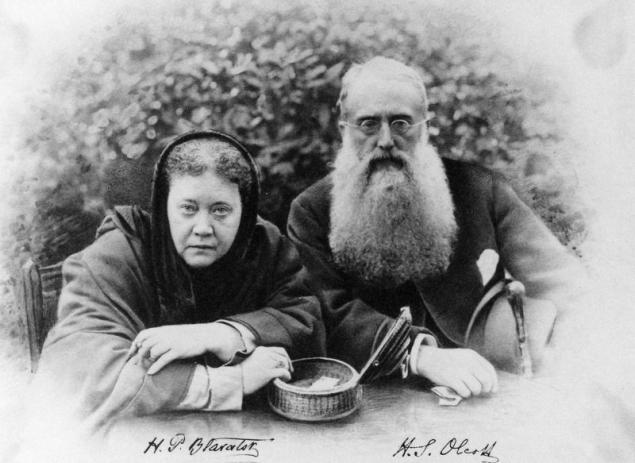
In October 1874, she had a significant meeting with the correspondent of the influential New York Daily Graphic, former Colonel Henry Steele Olcott, who became famous for his reports on various mysterious phenomena.
Blavatsky, reading them, shrewdly guessed in the author a kindred spirit and tried to win his friendship. After learning about the secret teachers and the mission of Helena Petrovna, Olcott decided to devote his entire life to advancing these goals. By the summer of the following year, a small circle of New York occultists had developed around Olcott and Blavatsky, in which the 24-year-old Irishman William Judge played a prominent role.
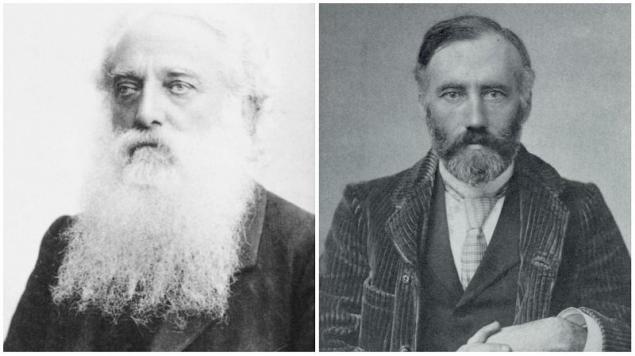
In September 1875, they formed the Theosophical Society, which initially united about two dozen people. Colonel Olcott was elected chairman and Judge was elected secretary. According to the charter, the society had three purposes:
Blavatsky wrote in her diary that day, “A child was born.” Osanna! Elena Petrovna wrote that “the members of the Society retain complete freedom of religious belief and, when they enter society, promise the same tolerance for all other beliefs and beliefs.” Their connection lies not in common beliefs, but in the common pursuit of truth.”

In 1882, the international headquarters of the Theosophical Society was moved to Adyar, a suburb of Madras, India (renamed Chennai in 1996).
The Theosophical Society is to be regarded as the true offspring of Blavatsky. Although officially Elena Petrovna held a rather modest post of correspondent secretary, her role, of course, was much more significant.
Without it, the Theosophical Society would never have had the influence it had in the future, primarily because Theosophy itself did not exist at the time of its inception, or rather, little was known about it.
The birth of this doctrine could be said only after the publication of Isis Unveiled, the first fundamental work in which Blavatsky tried to synthesize philosophy and science, history and tradition.
At the time of Blavatsky’s death, the Theosophical Society had more than 60,000 members. Among them were journalists, writers, artists and even scientists. Inventor Thomas Edison, outstanding American philosopher and psychologist William James, Irish poet William Butler Yates, Indian lawyer and politician Motilal Nehru and many others.
In 1885, Elena Petrovna left India due to deteriorating health. She lives in Germany and Belgium until she moves to London, where she continues to write books.

During this period her main works were written: The Voice of the Silence, The Key to Theosophy, and the fundamental work The Secret Doctrine, which was to become the basis for the longevity and prosperity of the Theosophical Society. In this book, she summarized her spiritual and intellectual experiences.
The Secret Doctrine Blavatsky. It became a textbook and favorite book for thousands of mystics, scientists, poets, musicians and writers. On Einstein’s desk, according to his niece, there was always a volume of The Secret Doctrine marked. Leo Tolstoy included quotes from this book in his works.
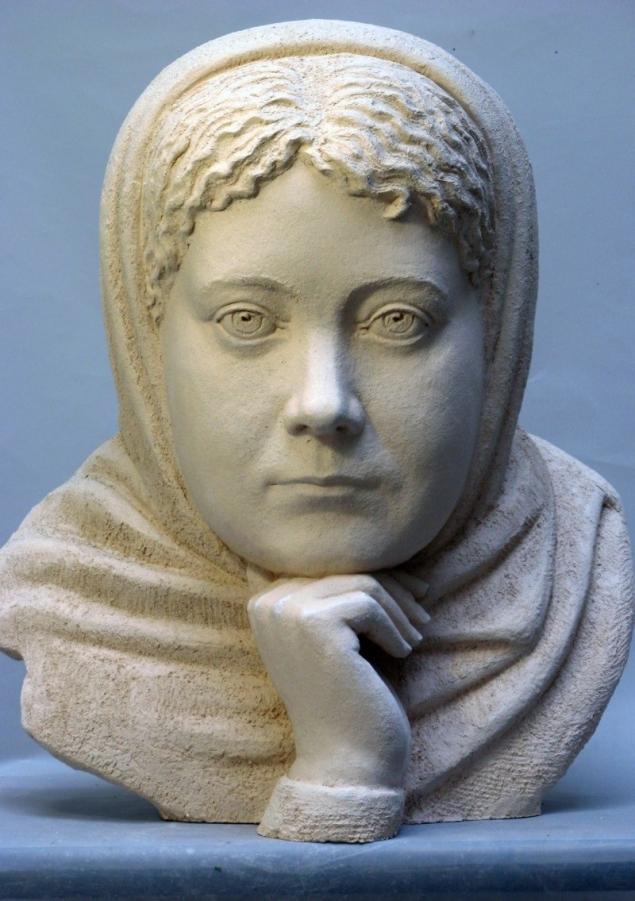
Elena Petrovna died on May 8, 1891. Its ashes were burned and its ashes divided among the three principal centres of the Theosophical movement (London, New York, and Adyar). Since then, the day of her repose is celebrated in three parts of the world under the name “White Lotus Day”.
1991, on the initiative of UNESCO, was declared the year of memory of H.P. Blavatsky. It was only a hundred years after the death of Helena Petrovna that humanity came to some extent to understand the knowledge transmitted by the Higher Om through its messenger.
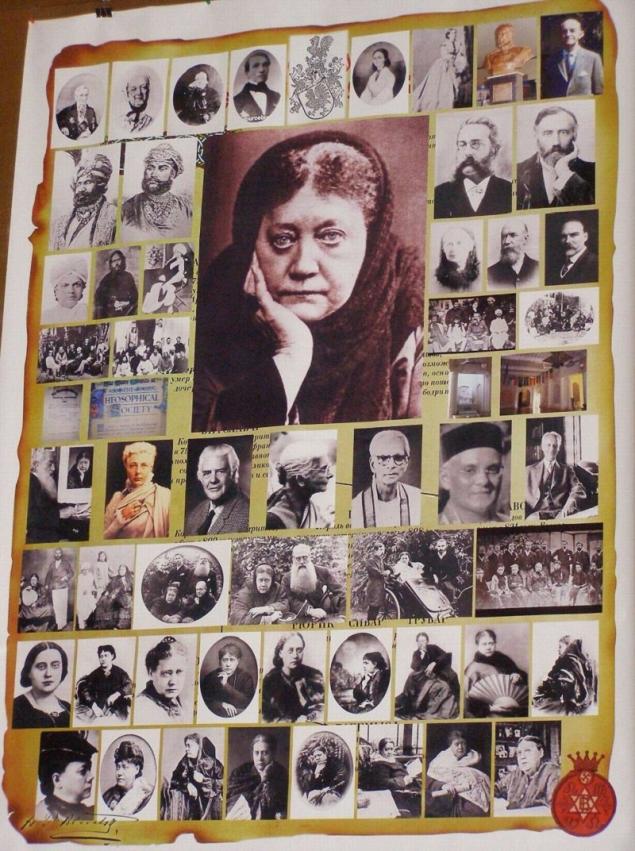
Newspapers in many countries around the world responded to her death. One of them, the Indian Myrror, wrote in an obituary: Helena Petrovna Blavatsky is no longer in the earthly sphere ... she did not belong to any one nation. The whole expanse of the earth was her home, all mankind her brothers. Her whole life was extraordinary. There are no human standards that can be applied to it. She was always the only one of her kind.
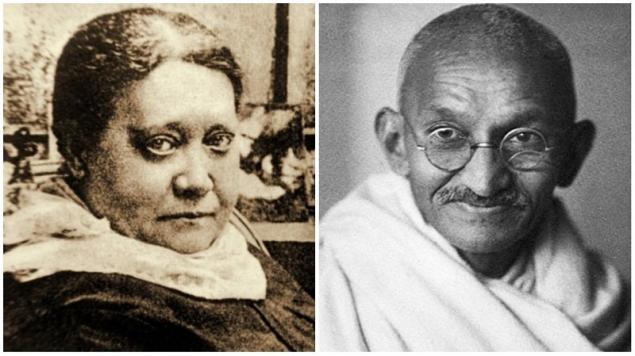
In his autobiographical book My Life, Mahatma Gandhi noted that his worldview was influenced by personal communication with members of the International Theosophical Society and reading of Blavatsky’s writings. Gandhi later wrote, “I would be more than satisfied if I could touch the edge of Madame Blavatsky’s clothes.”
Blavatsky played a prominent role in the great dialogue between two civilizations, the West and the East. By introducing her contemporaries to esoteric Hinduism and Buddhism, she paved the way to the West. transcendentalZen Buddhism, the movement of Krishna consciousness and yoga. Many pages of her legendary life and their true meaning are only beginning to be revealed to posterity today.
If you are interested in everything related to self-development and spiritual quests, pay attention to our article on Diagnostics of Karma by Sergey Lazarev.
Learn how to stop criticizing yourself and touch the healing power of love. Try to follow these recommendations, and life will be filled with new energy that can heal the soul and body.

There are people who come into the world with a clear mission. This mission of serving the common good makes their lives a martyrdom and a feat, but thanks to them, the evolution of mankind is accelerated.

That was Blavatsky's mission. More than a hundred years have passed since one day in May she left the earthly world. It is only now that we begin to understand her life.
Elena Blavatskaya Helena Petrovna Gan, later known worldwide as Elena Petrovna Blavatsky, was born on July 31, 1831 in the city of Ekaterinoslav (modern Dnepropetrovsk).

Blavatsky's mother - Elena Andreevna Hahn, a famous writer, in her virginity bore the surname Fadeev and belonged to the noble family of princes Dolgorukov, her father belonged to the family of hereditary Maclenburg princes Han von Rothenstern-Gan.
Elena Petrovna’s mother was called “Russian George Sand” for her literary talent, but she died suddenly at the age of twenty-eight, leaving two daughters in the care of her grandfather, the secret adviser Andrei Mikhailovich Fadeev.
Elena Petrovna was born prematurely and from childhood showed unusual abilities and cool disposition. Everywhere she heard strange voices, dreamed of ghosts, she confused relatives with her stories about the otherworldly.
Her favorite place (as she was called) was the library. At a very young age, Elena Petrovna reread almost all the main esoteric works from her grandfather’s library: Kabbalah, treatises on alchemy and astrology, legends about Atlantis and Greek priests.

According to her, as a child, she was most influenced by cavalry officers, friends and associates of her father, as well as Buddhists, whom she first met at the age of fourteen, visiting the city of Semipalatinsk, located on the border of Siberia and Mongolia.
In addition, from Semipalatinsk Buddhists, young Lölya learned about the distant mystical land of Shambhala, which later played a significant role in her life.
The habit of moving in Elena Blavatsky was formed in the years of childhood. Due to the father’s official movements, the family often had to change their place of residence. In Tiflis in the winter of 1848-1849, Elena Petrovna, wishing to gain complete independence, concluded a fictitious marriage with a man much older than her - Vice-Governor of Yerevan Nikifor Vladimirovich Blavatsky.

Three months after the wedding, Elena ran away from her husband and returned to her family. Her grandfather sent her with two escorts to her father in Odessa, but Elena managed to escape from them. From Odessa on the English sailboat "Commodore" Blavatsky, dressed as a young man, sails to Kerch, and then to Constantinople, where he meets the Russian Countess Kiselev.
Together they go on a trip to Egypt, Greece and Europe. The free journey of Blavatsky begins, which lasted forty-three years and is full of amazing adventures. Its chronology is difficult to restore accurately, since Elena Petrovna herself did not keep diaries and no one close to her was not.

In 1871, on the way to Cairo, on the ship on which Blavatsky sailed, a powder cellar exploded. Having miraculously escaped injury, Elena Petrovna is left without luggage and money, however, having reached Cairo, manages to organize a spiritualistic society for the study of psychic phenomena.
After leaving Cairo, Blavatsky traveled through Syria, Palestine and Constantinople in July 1872 to Odessa and spent nine months there. Sergei Yulyevich Witte recalls that Blavatsky, “settling in Odessa ... first opens a store and an ink factory, and then a flower shop.”
In just over the years of her life, Blavatsky twice made a trip around the world, visited Egypt and Europe, Tibet and India, as well as South America. In 1873, she was the first Russian woman to receive American citizenship.
From an early age, Elena saw some majestic Hindu in a white turban. She knew him as well as her family, called him her Guardian, and said he always saved her in all her troubles.

One such case occurred when Blavatsky was 13 years old. The horse on which she was riding suddenly became frightened and stood on her hind legs. The girl was thrown from the saddle, and she hung, entangled in the stirrups. Until the horse was stopped, she felt that someone’s hands were supporting her body.
According to Elena Petrovna, it was Mahatma Moriah, one of her spiritual teachers. She met him live in 1852 in London’s Hyde Park.
Blavatsky later relayed the details of that conversation. The teacher said that he needed her to participate in the work he was going to undertake and that she would have to spend three years in Tibet to prepare for this important task.
The teacher told her that he had secretly appeared in her life before, watched her progress, and now she is ready. He personally came to tell her that her life had a special meaning, a special purpose: to bring the knowledge of the Masters to people. It must become a key link in connecting East and West and establishing a new world spiritual order.
But first she has to learn: she has to go to India and then to Tibet. There, her mentors will wait for her, and after a seven-year period of obedience, she will gain enough knowledge and ability to fulfill her mission.
In 1852, Blavatsky arrives in India. When she finally reached the Himalayas, she wanted to go further to Tibet through Nepal, but the British authorities refused to let her. One of the letters told her to return to Europe. Along the way, she visited Java and Singapore. At the Cape of Good Hope, the ship on which she sailed was wrecked, but all the passengers were saved.

In 1855, from San Francisco, Blavatsky went on a new voyage across the Pacific Ocean to India, visiting Japan and Singapore on the way. In early 1856, she reached Calcutta. This second Indian journey took place under the direct guidance of the Master.
In the next two years, Blavatsky traveled all over India. She described her impressions twenty years later in a fascinating book of essays “From the Caves and Wilds of Hindustan”, published in Russian under the pseudonym Radda-Bai.
On the third attempt, around 1855, Elena Petrovna managed to penetrate into Tibet, where on the shores of the sacred Lake Manasarovar she was introduced to esoteric Buddhism: she studied secret texts and, first of all, the Tibetan Book of the Dead with commentaries, meditated under the guidance of Tibetan lamas and underwent secret initiation into the spirit world.

Officially, the Tibetan authorities never acknowledged Blavatsky’s visit to their country. At the same time, the IX Panchen Lama in the preface to the publication of Elena Petrovna Blavatsky’s work “The Voice of the Silence” noted that she studied for several years in one of the largest Buddhist monasteries of Tashilunpo and knew the previous Panchen Lama well.
In 1873, Blavatsky decided to become a citizen of the United States of America. At that time, the United States was experiencing a period of fascination with spiritualism. Everything unusual, having a taste of the otherworldly, was in fashion and was in the center of public attention.

In October 1874, she had a significant meeting with the correspondent of the influential New York Daily Graphic, former Colonel Henry Steele Olcott, who became famous for his reports on various mysterious phenomena.
Blavatsky, reading them, shrewdly guessed in the author a kindred spirit and tried to win his friendship. After learning about the secret teachers and the mission of Helena Petrovna, Olcott decided to devote his entire life to advancing these goals. By the summer of the following year, a small circle of New York occultists had developed around Olcott and Blavatsky, in which the 24-year-old Irishman William Judge played a prominent role.

In September 1875, they formed the Theosophical Society, which initially united about two dozen people. Colonel Olcott was elected chairman and Judge was elected secretary. According to the charter, the society had three purposes:
- Creating the core of a universal human brotherhood, regardless of race, creed, gender, caste and color.
- Promotion of comparative study of religion, philosophy and science.
- The Laws of Nature and the Forces Hidden in Man.
Blavatsky wrote in her diary that day, “A child was born.” Osanna! Elena Petrovna wrote that “the members of the Society retain complete freedom of religious belief and, when they enter society, promise the same tolerance for all other beliefs and beliefs.” Their connection lies not in common beliefs, but in the common pursuit of truth.”

In 1882, the international headquarters of the Theosophical Society was moved to Adyar, a suburb of Madras, India (renamed Chennai in 1996).
The Theosophical Society is to be regarded as the true offspring of Blavatsky. Although officially Elena Petrovna held a rather modest post of correspondent secretary, her role, of course, was much more significant.
Without it, the Theosophical Society would never have had the influence it had in the future, primarily because Theosophy itself did not exist at the time of its inception, or rather, little was known about it.
The birth of this doctrine could be said only after the publication of Isis Unveiled, the first fundamental work in which Blavatsky tried to synthesize philosophy and science, history and tradition.
At the time of Blavatsky’s death, the Theosophical Society had more than 60,000 members. Among them were journalists, writers, artists and even scientists. Inventor Thomas Edison, outstanding American philosopher and psychologist William James, Irish poet William Butler Yates, Indian lawyer and politician Motilal Nehru and many others.
In 1885, Elena Petrovna left India due to deteriorating health. She lives in Germany and Belgium until she moves to London, where she continues to write books.

During this period her main works were written: The Voice of the Silence, The Key to Theosophy, and the fundamental work The Secret Doctrine, which was to become the basis for the longevity and prosperity of the Theosophical Society. In this book, she summarized her spiritual and intellectual experiences.
The Secret Doctrine Blavatsky. It became a textbook and favorite book for thousands of mystics, scientists, poets, musicians and writers. On Einstein’s desk, according to his niece, there was always a volume of The Secret Doctrine marked. Leo Tolstoy included quotes from this book in his works.

Elena Petrovna died on May 8, 1891. Its ashes were burned and its ashes divided among the three principal centres of the Theosophical movement (London, New York, and Adyar). Since then, the day of her repose is celebrated in three parts of the world under the name “White Lotus Day”.
1991, on the initiative of UNESCO, was declared the year of memory of H.P. Blavatsky. It was only a hundred years after the death of Helena Petrovna that humanity came to some extent to understand the knowledge transmitted by the Higher Om through its messenger.

Newspapers in many countries around the world responded to her death. One of them, the Indian Myrror, wrote in an obituary: Helena Petrovna Blavatsky is no longer in the earthly sphere ... she did not belong to any one nation. The whole expanse of the earth was her home, all mankind her brothers. Her whole life was extraordinary. There are no human standards that can be applied to it. She was always the only one of her kind.

In his autobiographical book My Life, Mahatma Gandhi noted that his worldview was influenced by personal communication with members of the International Theosophical Society and reading of Blavatsky’s writings. Gandhi later wrote, “I would be more than satisfied if I could touch the edge of Madame Blavatsky’s clothes.”
Blavatsky played a prominent role in the great dialogue between two civilizations, the West and the East. By introducing her contemporaries to esoteric Hinduism and Buddhism, she paved the way to the West. transcendentalZen Buddhism, the movement of Krishna consciousness and yoga. Many pages of her legendary life and their true meaning are only beginning to be revealed to posterity today.
If you are interested in everything related to self-development and spiritual quests, pay attention to our article on Diagnostics of Karma by Sergey Lazarev.
Learn how to stop criticizing yourself and touch the healing power of love. Try to follow these recommendations, and life will be filled with new energy that can heal the soul and body.
To tighten the area around the mouth, take a cork, put between the... Wake up the muscles that are not working!
Can a child be taught to read at age two?
